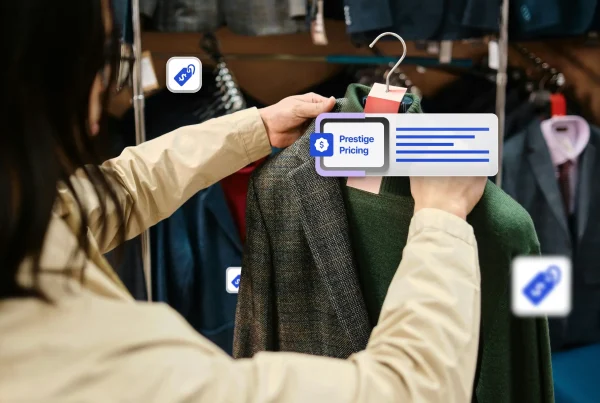Retailers are facing unprecedented pricing challenges
The retail industry is getting squeezed between rising supply chain costs, inflationary pressures and declining customer loyalty.
Due to inflation, retailers around the world are currently witnessing whipsaw changes in consumer demand patterns, making it imperative for brands to closely watch, and more importantly – carefully manage, the way they offer promotions. The high levels of inflation were driven by spikes in fuel prices, food, and housing, further motivating consumers to look for savings and deeper discounts.
In order to tackle inflationary pressures and dynamic consumer spending behaviors tactfully, retailers need to resort to comprehensive lifecycle pricing, merchandising, and allocation optimization strategies. To protect their margins, brands need to act with surgical precision, understand their KVCs and KVIs, and switch to data-backed promotional planning, driven by accurate and localized demand forecasts.
Several brands consider passing on their costs to shoppers, either through higher product prices or lower discounts, but given the reduced discretionary spending by customers, long production cycles and supply chain disruptions, brands now need to optimize their pricing and promotions strategy tactfully to win and retain near-term market share.
What Is Price Optimization Model?
Lifecycle Price Optimization Models are complex algorithms engineered to identify the demand shifts at various price levels and cater to customer satisfaction with data on costs and inventory levels to build optimal prices, and ensure advanced promotional pricing across SKUs and markdown optimization.
Optimization of Lifecycle Pricing
The Challenge
Due to inflation, retailers now are not only facing rising costs of manufacturing and supply, but also a slowing growth environment and falling consumer confidence.
In fact, there has been a significant drop in customer optimism from 44% to 38%, as per the Consumer Pulse survey reports. The drop in optimism was sharpest among high-income consumers, at the time in 2022 when inflation heated up. Not to mention, due to unclear pricing and promotional decisions based on gut instincts and historical data that does not take the current inflation or unprecedented geopolitical events into account, retailers have been dealing with huge losses.
This is why retailers must factor in all the interrelations between products when setting prices, along with external aspects such as inflation, inventory issues, local demand, and so on, to ensure a powerful promotional pricing strategy. It is difficult to understand which items and how many of them require price changes. Not only that, different product categories like apparel, CPG, or industrial manufacturing, have different KVIs and KPIs, and why each of their product pricing is unique to one another. Furthermore, sometimes adding promotions can damage KPIs instead of accelerating them.
By modifying the price on one item, the neighboring items also get triggered and the entire inventory now requires a robust pricing strategy. Thus, the fine-tuning of portfolio pricing architecture becomes extremely challenging, given the millions of data points one needs to consider before indulging in promotions.
The Solution
To increase the KPI of a particular product category, be it volume, revenue, or profit, the retailer needs to deploy optimization models that consider both the items’ elasticity and their cross-elasticity with similar items. A definite equation and complex ML algorithms brings together all of these coefficients and provides a solution for optimal prices across the inventory and accurate promotions during the entire pricing cycle.
With such a powerful lifecycle pricing solution, the retailer is able to deploy ‘differentiated’ pricing recommendations across all SKUs to predict and increase the sales of their products.
How Can Pricing Optimization Models Help Business?
Retail price optimization solutions allow retailers to leverage the shoppers’ perception of knowing where and how much they want to spend. And with the proper analysis of customer spending behavior, retailers can maximize the revenue in each situation.
Reviewing product performance based on its last time on the market is obsolete as there are a number of factors that influence it today. A few of them include:
-Multiple SKUs and channels
-The complexity of products
-The fact that shoppers are more aware of prices
-Shoppers are less loyal to brands and more inclined towards deeper promotions
So let’s take a look at how retail businesses can accelerate inventory turns, eliminate stock-outs, and maintain GMs through effective promo planning–
1. Adapt to inflation by setting the right promotions
As inventories and supply chains continue to deal with constraints even after post-COVID, retailers can also raise margins by not resorting to clearance pricing much. By switching to lesser stocks, retailers can reduce the problem of seasonal inventory overstocks, thereby ensuring lesser discounts and markdowns to clear space for further merchandise.
Retailers need to bring about some equilibrium in clearing inventories and pulling back on discounts. Despite inflationary pressures, retailers can drive revenue in the following manner:
- Getting more granular in promoting the entire assortment
- Resorting to a stronger connection between promotions and current inventories
- Understanding the customer purchasing capacities of different channels during inflation
As a result, retailers can better combat inflation across the entire buying and product merchandising cycle. In short, retailers must deal with inflationary pressures by adhering to acceptable pricing thresholds.
2. Switch to Personalized Promotions
Rather than turning to an average price spike across their entire product mix, retailers should take a more personalized approach to better resonate with prices as per consumers’ value perceptions. This allows them to reshuffle the value mix across their product assortments.
To deal with high supply costs and inflationary pressures, a more granular pricing strategy should take into consideration a myriad of customer and product sensitivities, inflationary effects on consumers and the overall economy of that channel, and inventory positions. In terms of SKUs and categories of products, retailers need to segment their inventory pricing based on price elasticity and margin dynamics.
Increasing the price across the assortment while resorting to personalized promotions and loyalty options could be a good way of selling inelastic products that are volatile during inflation. This can improve the relationship with high-value customers while easing out some margin pressures by reducing the frequency of mass promos and preventing markdowns.
Segmentation of the assortment and personalization of promotions need to be done repeatedly since the response of customers and inflationary outcomes will change over time. Retailers also need to ensure continuous monitoring to identify the categories and products that have to deal with the highest margin pressures and which shoppers are likely to be sensitive to price modifications.
3. Analyzing Price Elasticity
One of the best ways to ensure optimal promotional pricing is to generate demand and spur quick change to a business’s top and bottom lines with strategic markdown optimization.
One of the most basic retail concepts is that when an item’s price goes down, its sales go up. Price elasticity is used to measure the relationship between price and demand and how they affect each other.
If a product is elastic, a slight modification in its price will highly impact its demand. If a product is inelastic, its pricing may not change its demand much. Understanding the elasticity of your item is essential to know the demand curve of your inventory.
With advanced retail price optimization solutions, businesses can efficiently calculate endless elasticity values and seamlessly change prices based on demand dynamics. The result: protected margins, better forecasting capabilities, and optimal prices to drive profitable demand.
4. Resort to Conditional Promos
If retailers want to set promotions while protecting their margins, switching to conditional promos is a good choice for effective markdown optimization. Rather than running a straight deal like “$10 off any purchase” or “15% off all products,” implement limitations or conditions that customers need to meet to redeem the offer: “Buy 10 items and receive 40% off.”
Businesses may also utilize this strategy without putting the first product on sale. For example: “This month, buy a blouse at the full price of $80 and each additional pair is just $60.”
Other conditional promotions involve seasonal or limited-time discounts that we often see during Black Friday and Cyber Monday sales.
Final Thoughts
There are several ways retailers can increase their sales while maintaining their margins. All of the aforementioned approaches require the adoption of price optimization processes, including data management, algorithmic decision-making, and advanced predictive analytics.
IA’s PriceSmart uses the blend of AI and ML technologies to forecast the impact of every lifecycle pricing or promo campaign based on millions of data points such as seasonality, customer behavior, unprecedented events, and competitors’ actions. Additionally, it factors in retailers’ business strategy, goals, and requirements to cater to their growth.





